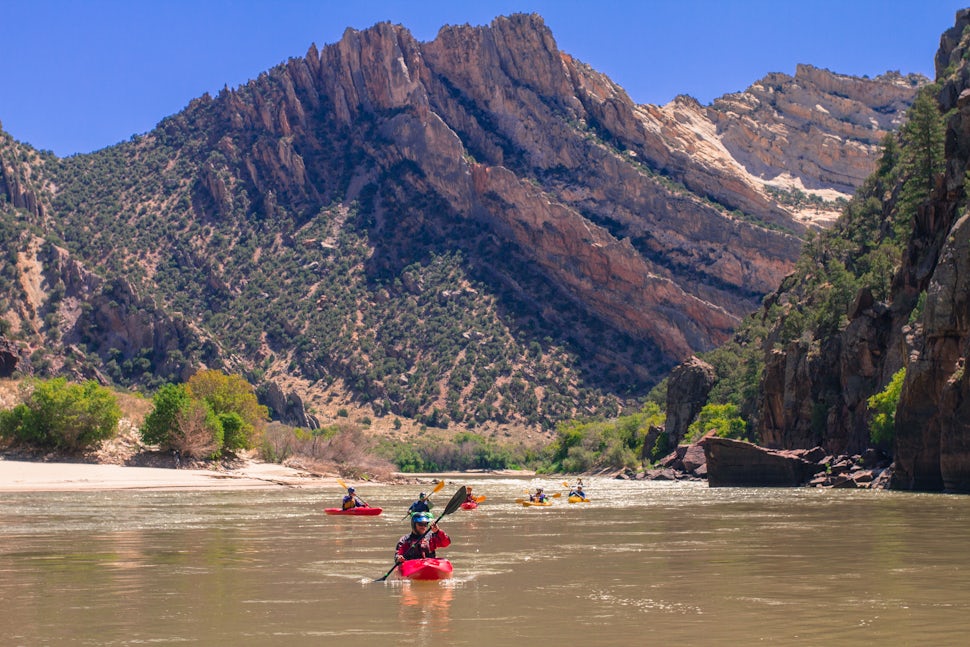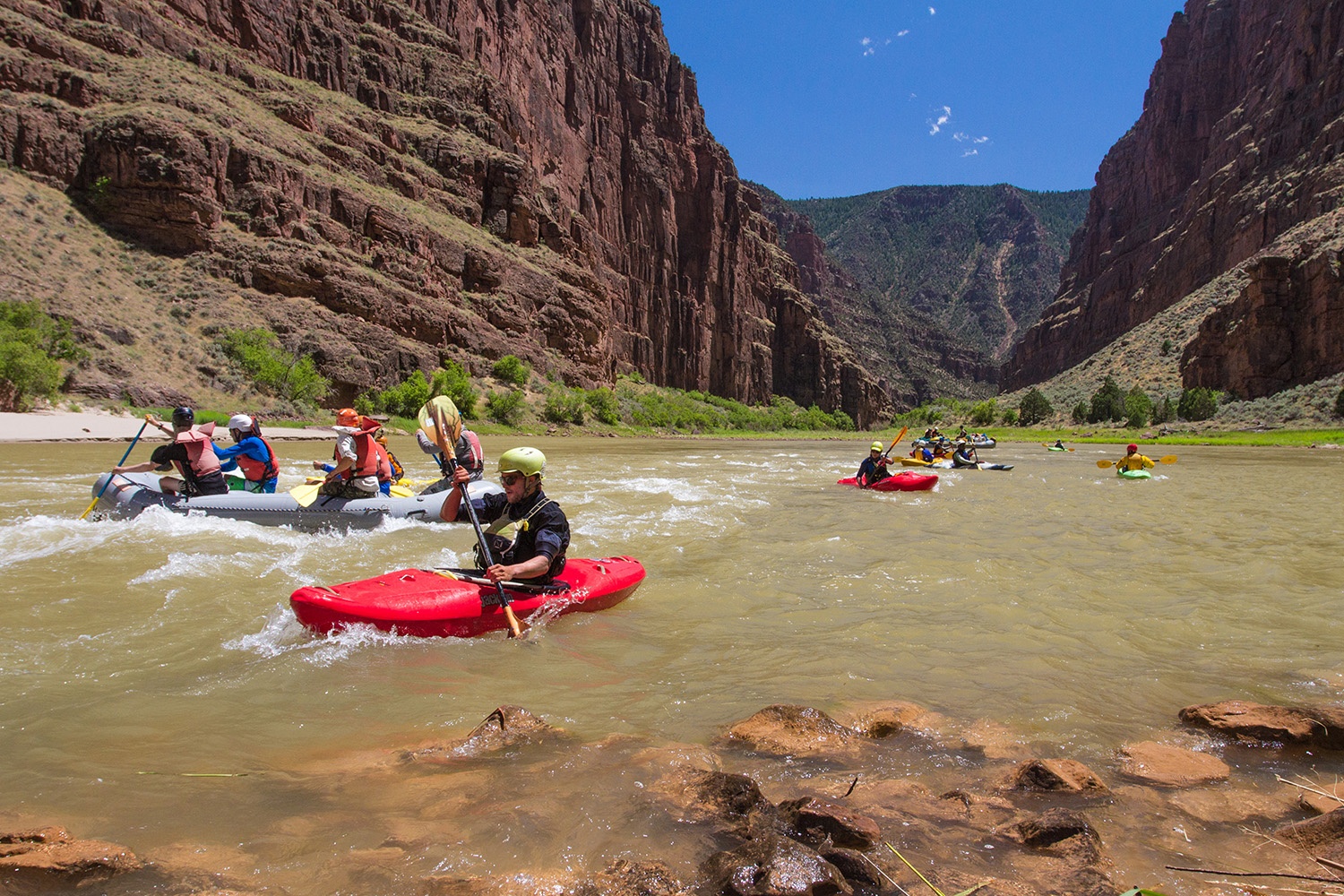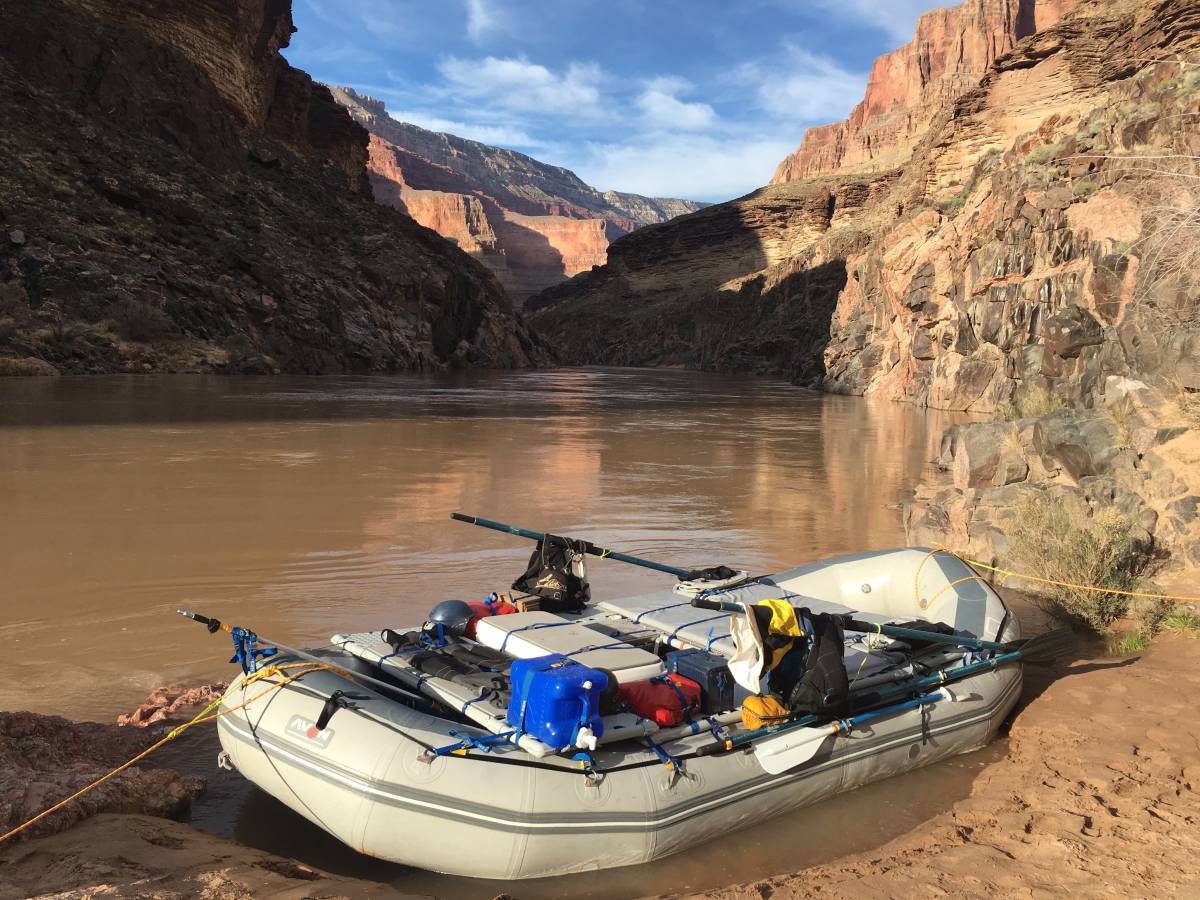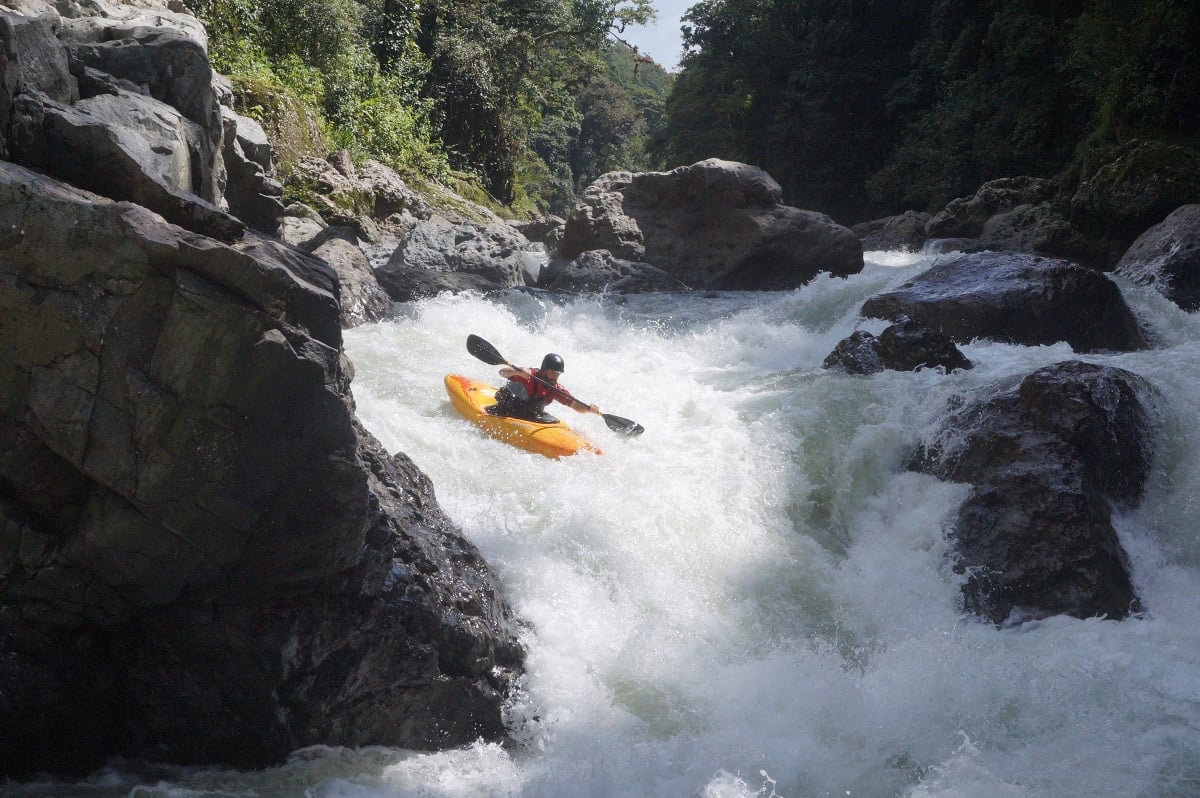First Aid Kit Advice for River Travel
By: NOLS + Save to a List

First, we have to remind ourselves there is no perfect first aid kit. We need to preplan and consider the environment, the terrain, the climate, the skill set of companions, the number of days, number of people, and remoteness of our expedition.

Then, we can get down to figuring out what we actually need to bring.
FIRST AID KITS: RAFTING
When it comes to rafting down rivers, especially on multi-day adventures, we can usually go ahead and build ourselves a comprehensive first aid kit with all the bells, whistles, and medications.
There is plenty of room in the raft and the capacity to accommodate a heavier kit, as long as you secure and organize the contents in plastic bags and then choose the appropriate waterproof storage container (I prefer a pelican box or watershed bag). I build my kits just like I would for a climbing base camp or a sea kayaking expedition.

Our 18-foot expedition raft deep in the Grand Canyon. Photo courtesy of Nate Ostis.
I do build a secondary first aid kit that is specific to hands and feet when rafting, especially on desert rivers where sediment in the water combined with intense wind and sun can result in dry, cracked, and damaged skin. We become a compromised member of the expedition if our hands and feet are sore, cracked, and infected. That’s why I treat my hands and feet before they need it.
Each night before bed I treat my hands with skin lotion or hand salve and then cover them with medical gloves for at least the first half of the night. I do the same with my feet before covering them with clean socks. This at least gives them opportunity to heal for 4-5 hours a day, even if the rest of the day is rather damaging to them.
FIRST AID KITS: KAYAKING

The inner foam pillars of my 13-foot whitewater kayak. I cut out storage places for my critical needs. Photo courtesy of Nate Ostis.
For kayaking I need to be more selective in my first aid contents since there is limited space. Also, weight management equals risk management, so I need to be mindful of how heavy I make my kayak before plunging down the next drop.
Recently, I've taken advantage of the foam pillars inside my whitewater kayaks to carve in storage housing for my critical needs. The above photo shows the insides of my 13' Liquid Logic Stinger whitewater kayak. The insulated Hydroflasks are for water storage, the blue pelican box is my repair kit, and the Nalgene bottles serve as storage units (Nalgene bottles make excellent first aid kit containers for kayaks—one of them is my major first aid/drug kit and another is my minor first aid kit, mostly dedicated to taking care of my hands). This particular setup was implemented before a five-day, 280-mile self-supported kayak journey through the Grand Canyon.
SUPPLIES TO CONSIDER
ITEMS I PRIORITIZE INCLUDE (BUT ARE NOT LIMITED TO):
- Wound management (gauze, band-aids, closure kit, ointment)
- Tweezers
- Trauma shears
- Irrigation syringe
- Knife
- Mirror
- Nail clippers
- Nitrile gloves
- Tape
- Epinephrine and Benadryl
- Tylenol and IBU
- Ciproflaxin (for bad belly)
- Delorme InReach GPS emergency communication device
- NOLS Wilderness Medicine Field Guide with protocols
- Bandages and ACE wrap

Nate Ostis on the Rio Pacuare, Costa Rica Dec. 2015. Photo by Ben Morton.
My first aid kit is in a constant state of change and that’s part of what I love about backcountry travel. Discover what works best for you, but avoid getting too comfortable—risk management is a journey, not a destination.
Good luck, happy boating, and push "pause" before your next trip. Extra thought before leaving the house can go a long way toward minimizing the epic nature of your next mishap (because yep … it's coming).

Nate Ostis is a NOLS instructor and writer of the award-winning NOLS River Rescue Guide.
Combine learning leadership, outdoor skills, and wilderness medicine on a NOLS semester.
Story by: Nate Ostis
We want to acknowledge and thank the past, present, and future generations of all Native Nations and Indigenous Peoples whose ancestral lands we travel, explore, and play on. Always practice Leave No Trace ethics on your adventures and follow local regulations. Please explore responsibly!
Do you love the outdoors?
Yep, us too. That's why we send you the best local adventures, stories, and expert advice, right to your inbox.







